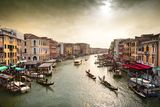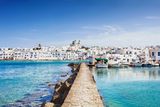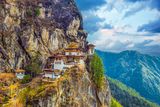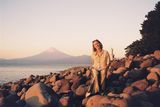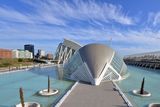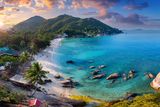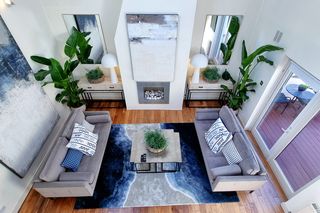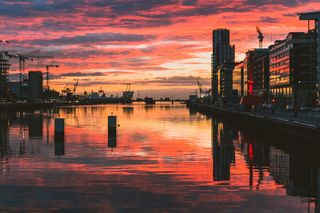Swaziland: Wild for African adventure
Horseback riding through Savanah in Swaziland
I pine for a jaunt along the N17, but unlike the emigrant in the Saw Doctors' classic my road is thousands of miles from the one through the west of Ireland.
About two hours outside Johannesburg we merged with South Africa's N17 en route to the Kingdom of Swaziland. Here, there is much more than the stone walls and green grass the Saw Doctors' character craved. Swaziland is about daytime explorations and nighttime campfires. Your soundtrack is filled with epic wild animal noises or locals singing around a cosy campfire after dinner.
Mobile phone reception on Irish handsets is patchy at best with no dependable internet access. Wi-fi is unreliable and hard to find but it's a joy to be without technology once in a while.
Travellers are forced to get back to basics, cut the umbilical cord to the outside world and throw themselves wholeheartedly into the country's warm embrace.
Swaziland is home to Africa's last true monarchy, and is ruled by King Mswati III. He is renowned for his vibrant traditional African dress sense and having more wives than you can count on two hands.
Swaziland offers travellers the chance to get to the heart of what Africa is about, enhanced further by being forced 'off the grid'.
The landlocked country, nestled between South Africa and Mozambique, is action-packed with adventure and awash with wonderful wildlife, colourful culture and stunning scenery. Up in the Highveld, after crossing the border from South Africa with our trusty tour guide, Bob, we make our way to a nearby glass-blowing factory for rest and refuelling. Swaziland is a four-hour drive east of Johannesburg. Flights from Ireland take about 11 hours via Heathrow so pit stops on the road are essential.
At the factory we are greeted by roaming peacocks and peahens before we retreat to an upstairs restaurant and a quiet sun-kissed balcony for lunch. After eating we go downstairs for a factory tour.
"Like most of what you are going to see in Swaziland, it is very sustainable," explains Chas Prettejohn, the factory's owner, as his colleagues work recycled glass using cooking oil that was discarded by an international fast food chain.
The glass is manipulated into sculptures of hippos, rhinos and giraffes, all native to Swaziland and awaiting our arrival in wildlife sanctuaries and game reserves. The country is not without its problems. HIV is a long-standing issue, resources are limited and foreign aid is important.
Nonetheless, the country has been a leading light in conservation in Southern Africa, helped in no small way by the Irish. The name Reilly is synonymous here with preserving various species of wildlife - rehoming them in the country's biggest game parks.
But before visiting Reilly's 'Big Game Parks' we make our way to Malolotja Nature Reserve and past the various zebra, impala and warthogs that loiter everywhere. After checking into our log cabins, Bob picks up a box of the local brew, Sibebe (a surprisingly good beer) and drives us to Logwadja - a nearby viewing point. There was nothing to see here for miles but rolling green hills as we watched the sunset and listened to two coyotes howling far away in the distance.
Impala is served for dinner with rice and veg (other meats and vegetarian options are also available). We eat impala regularly, ignoring any guilt fuelled by watching them roam in the wild every day. The meat is tender and delicious.
The following morning we climb into a safari jeep and are taken for a sconce of the area before an unforgettable canopy tour. Gliding above a forest on a series of ziplines looking out for birdlife while getting drunk on adrenaline would be the highlight of any other trip, but not this one. There is much more to come.
Things get even better when we go on to our first 'Big Game Park' and spend two nights sleeping in thatched beehive huts, all the while exploring the Reilly influence.
Mlilwane Wildlife Sanctuary is the birthplace of Swazi conservation. It was here Mickey Reilly, a former Irish soldier, settled early in the 1900s after falling in love with the country.
His son Ted grew up there and with the help of his dependable Land Rover, christened Jezebel, he populated the sanctuary during its formative years in the 1960s.
Every day Ted and Jezebel would set off and capture animals. Most of them needed to be tranquilised and hurried back to Mlilwane before the sedatives wore off. Ted is now in his 70s and still tends to the animals in a new jeep. Jezebel stands proudly in a little museum.
Ted's ideas have since spread and now a third generation of Reillys look after some of Africa's most important game reserves. "Indigenous species that had disappeared were reintroduced to Swaziland," say Ted's daughter Anne. "Most of them are back now."
Had Mlilwane's beehive huts been made of stone they wouldn't look out of place on the Dingle Peninsula at home.
Inside, the thatched lodgings are spacious and warm. They sleep two adults or a family comfortably and come equipped with a hot shower. Meals are served at a semi-open-air restaurant overlooking a pool where guests can admire hippos, crocodiles and birdlife. When walking down for breakfast it is essential to skip gracefully past the previous night's campfire where the warthogs often nuzzle together in the ash for extra warmth.
Days are filled with mountain bike rides, hikes and a horse riding tour of the park which is ideal for novice riders, like me,or the experts among us. Watching animals from the back of a horse affords you the opportunity to get much closer to the wildlife on show because they are less wary of their equine cousins.
Before sunset, more Sibebe is gathered before we are rolling in the back of a Land Rover to the top of Execution Rock - the name points to the cultural significance of the place, but the sunsets are dramatic.
Sandwiched between our game reserve visits is an overnight stay at the Shewula Mountain Camp. Saying goodbye to Mlilwane also meant waving adieu to electricity as we headed for the most remote parts of the country. Shewula offers a glimpse at real Swazi culture, with visits to local communities, a witchdoctor and local farms.
The highpoint of the trip was yet to come however in Mkhaya, a game reserve that offers accommodation with no walls, no electricity and no care for what is happening in the world you left behind when boarding your flight.
Smaller animals roam free and occasionally dip in and out of the bedrooms, made up of a thatched roof on stilts. The camp is cleverly laid out along a dry riverbed, and vegetation and trees line the route, offering total privacy and a chance to be at home among nature. No room is visible from the next and the only visitors you are likely to encounter before bed or after stepping out of the shower are the monkeys who occasionally swing by on the surrounding trees.
Walking and jeep safaris help you get up close and personal with the wildlife, and within 20 minutes of arriving inside the gates of the camp we had watched hippos swimming, rhinos taking in the rays and giraffes grazing. A campfire dinner, traditional Swazi music and dance pass the hours before bed. A few glasses of Sibebe and South African wine encourage us visitors to join in.
The following morning coffee is brought to the room as the sun rises before a morning safari. As the animals slumber we get within feet of a rhino mother and her calf just moments after passing three giraffes crossing our track in search of their breakfast. By the time we finish our bacon and eggs it is time to leave and hit the N17 again.
As we edge towards Johannesburg and the flight home, civilisation comes back into view. A phone rings on the bus. It is the first time we have heard the shrill sound for a week and a shiver runs down my spine. It is followed by a week's worth of bings from emails, texts and Facebook notifications. This is not how life should be.
Oh I wish I was on the N17.
Getting there
Explore offers an eight-day Kingdom of Swaziland trip from £1,455 per person. This price includes return flights from the UK to Johannesburg, seven nights’ accommodation on a bed and breakfast basis, most other meals, transport and the services of an Explore leader and local guides.
A land-only option with Explore starts at €969 per person. Flights can then be arranged by Explore but prices vary depending on demand and seasonality.
Flying from Dublin last May via Heathrow to Johannesburg with Aer Lingus and Virgin cost from €485 per person return. Transfers from Johannesburg to Swaziland by road can take up to five hours, including time taken to cross the border. For more information see thekingdomofswaziland.com.
Contact Explore at explore.co.uk or via +44 1252 884 723.
Take Two: Top attractions
Mkhaya Reserve
The camp is uniquely laid out in a forest along a dry riverbed. The accommodation is open on each side and lit by lanterns. There is no electricity but plenty of intimate encounters with mesmerising creatures.
Malolotja zip lining
The canopy tour above a forest and along dramatic cliff faces offers a unique trip through a nature reserve. The views are as dramatic as the trips along the highwires. See www.malolotjacanopytour.com
Join the Irish Independent WhatsApp channel
Stay up to date with all the latest news

